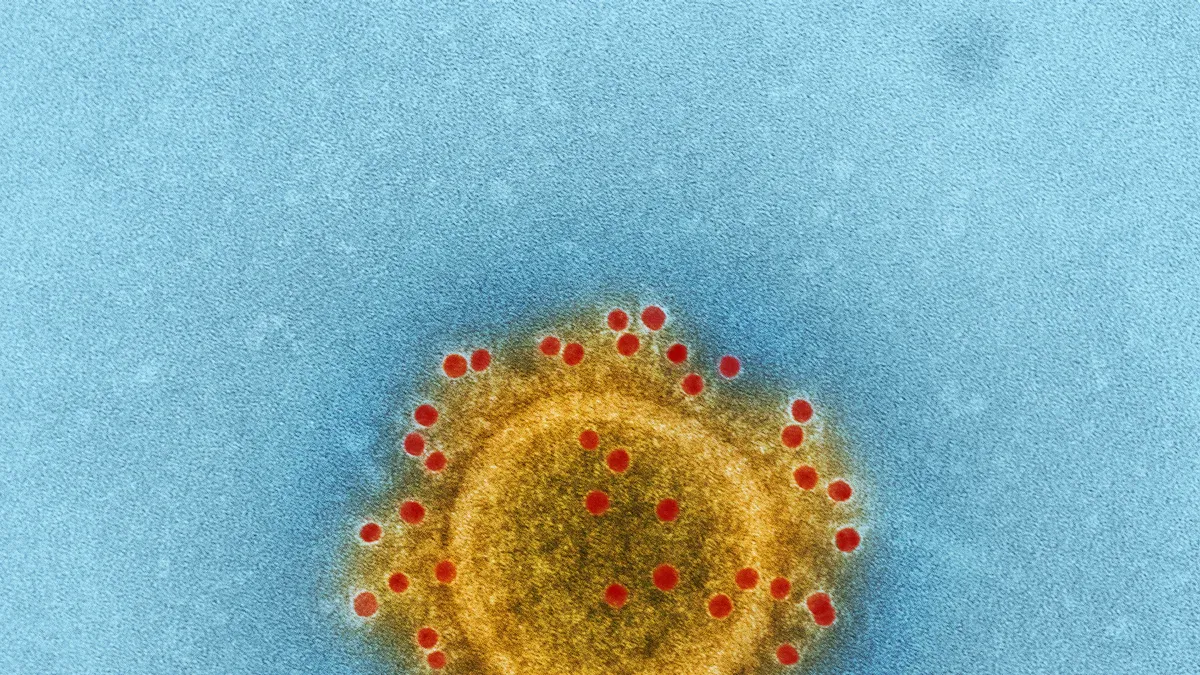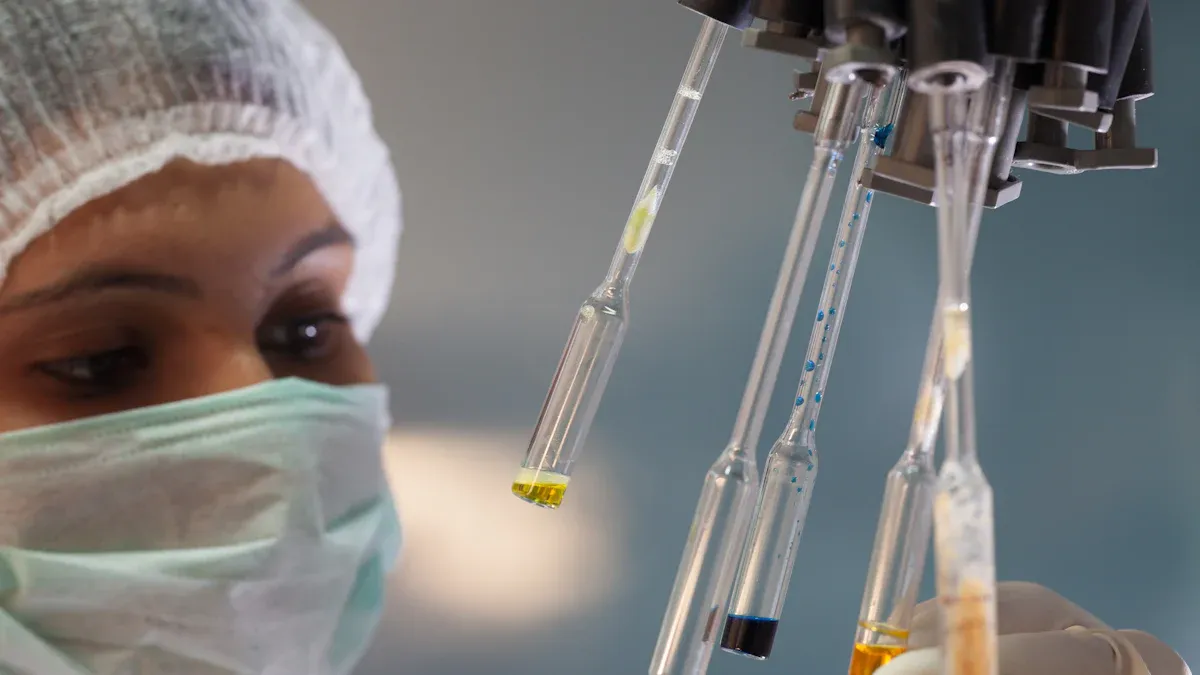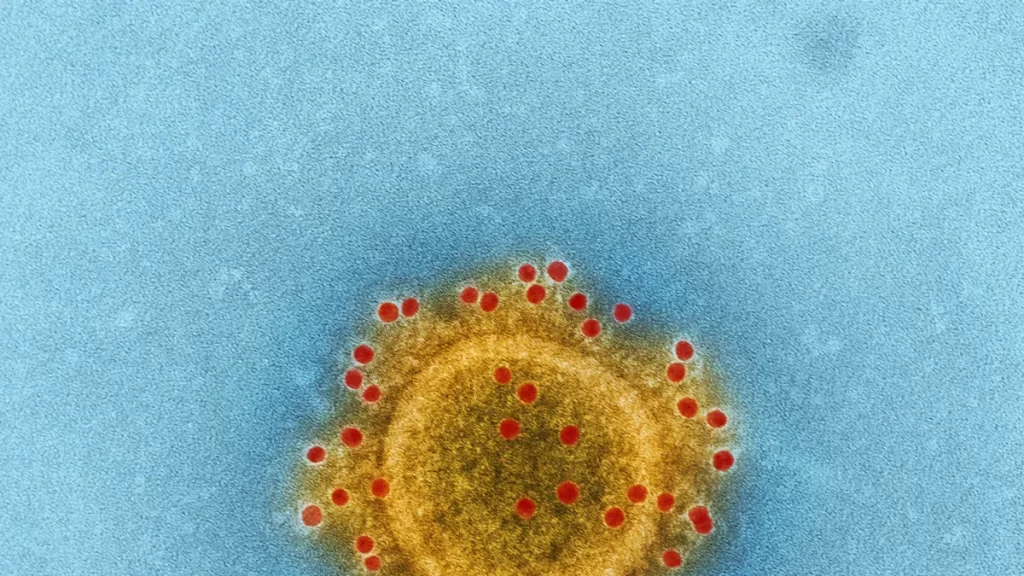
Singlet oxygen is important for changing chemical reactions. It reacts in special ways and helps in light-based processes. Scientists measure its effects using quantum yield values. For example: 0.43 for Si1a, 0.94 for Q-Si1a, and 0.58 for S-Si1a. These numbers show how well it works in reactions. Singlet oxygen can mix with molecules in new ways. This helps improve chemical creation and other fields.
Key Takeaways
Singlet oxygen is a very reactive type of oxygen. It is important in chemical reactions, especially those using light.
Light and special materials can create singlet oxygen. This makes it useful for eco-friendly processes and cleaning pollution.
In medicine, singlet oxygen helps in photodynamic therapy. It targets cancer cells while protecting healthy ones.
Singlet oxygen makes chemical reactions work better. It helps create fewer waste products.
Scientists want to use singlet oxygen more in green chemistry. This will make chemical processes safer and better for the planet.
Understanding Singlet Oxygen
What Makes Singlet Oxygen Unique
Singlet oxygen reacts quickly and has special chemical traits. It is different from regular oxygen because it is in an excited state. This lets it interact with molecules in ways normal oxygen cannot. It helps in light-based reactions and can change proteins and organic compounds. Scientists use it in research and industries for many tasks.
Here’s a table comparing singlet oxygen to superoxide anion:
Property | Singlet Oxygen (1O2) | Superoxide Anion (O2●−) |
|---|---|---|
Reactivity | Very high | Lower |
How It Forms | Energy from excited states | Needs electron donors |
Toxicity | High | Reduced by SOD |
Enzyme Removal | None | Exists |
Biological Effects | Changes proteins | Can harm lipids |
This table shows why singlet oxygen is useful and powerful.
Differences Between Singlet and Ground-State Oxygen
Singlet oxygen is not like the oxygen we breathe. Regular oxygen, called triplet oxygen, has two unpaired electrons spinning the same way. This makes it stable and less reactive. Singlet oxygen has paired electrons in an excited state. This makes it more reactive and able to do special chemical reactions.
For example, singlet oxygen reacts with certain molecules to make hydroperoxides. These reactions are important for making chemicals and cleaning pollutants.
The Role of Singlet Oxygen in Reactivity
Singlet oxygen helps start chemical reactions. Its high energy lets it oxidize other molecules. Light can activate singlet oxygen, causing many reactions to happen. This is helpful in processes that need light to work.
In making chemicals, singlet oxygen helps target specific bonds. It is used to make medicines and other important products. Its ability to work quickly and accurately makes it valuable in chemistry today.
Singlet Oxygen in Photochemical Reactions

Making Singlet Oxygen with Light
Using light is a smart way to make singlet oxygen. Special materials are activated by light to produce it. For example, scientists use Mn-doped ZnO-ZrO2 nanocomposites. These materials create singlet oxygen when hit by 405 nm visible light. The process works better as the blue light’s power increases. Between 0.8 and 1.6 W/cm², the efficiency grows steadily. This shows how we can adjust systems to make more singlet oxygen.
Photocatalytic generation is important in many areas. It helps in light-based reactions that make useful products. These reactions often need singlet oxygen to target specific molecules. This makes them work faster and more accurately.
Breaking Down Harmful Substances with Singlet Oxygen
Singlet oxygen is key in breaking down harmful things with light. Studies show how it works:
Oleate-coated ZnO nanoparticles make singlet oxygen to break Rhodamine B (RhB). This only happens when RhB is present, not in pure water.
RhB sticks well to these catalysts, boosting singlet oxygen production under light. This leads to better breakdown of RhB.
TPPS porphyrin creates singlet oxygen by transferring energy. It has quantum yields of 0.58 and 0.59 at different pH levels. This helps break down organic dyes effectively.
These processes turn pollutants into harmless products, helping clean the environment.
Cool Changes from Photochemical Reactions
Singlet oxygen causes amazing chemical changes. One example is turning alkenes into hydroperoxides, which are useful for making chemicals. Another is reducing harmful substances into safer ones using light. These reactions show how singlet oxygen helps solve environmental problems and make new materials.
By learning these examples, you can see how singlet oxygen improves photochemical reactions. Its ability to work quickly and precisely makes it very important in modern science.
Applications of Singlet Oxygen in Chemical Synthesis

Chemoselective Oxidation Reactions
Singlet oxygen is key in chemoselective oxidation reactions. It reacts quickly and targets specific bonds in molecules. This helps make precise chemical changes. For example, 3DCA* creates only product 2 during oxidation. This accuracy is important for making pure compounds.
The success of these reactions depends on several factors. Solvent polarity and singlet oxygen yield are important. In non-polar solvents, an exciplex intermediate forms. This leads to triplet DCA (3DCA*) with 0.64 efficiency. The singlet oxygen yield (ΦΔ) is 0.56, and its lifetime (τS1) is 7.0 ns. These details show how singlet oxygen works well in oxidation.
Synthesis of Complex Organic Compounds
Singlet oxygen helps make complex organic compounds. It allows controlled and efficient reactions. Scientists use caged photosensitizers to boost singlet oxygen production. This method improves yields, reaching 69% with fresh compounds added slowly under light.
Another method uncages photosensitizers to restart their activity. This releases singlet oxygen in a controlled way. It works with many compounds and uses solid-supported metal catalysts. These reactions can even happen in living organisms. This opens new possibilities in biochemistry and medicine.
Industrial and Pharmaceutical Applications
Industries use singlet oxygen for many purposes. It helps make fine chemicals, agrochemicals, and medicines. For example, it aids in making ammonia for fertilizers. It also helps fix nitrogen, improving farming.
In medicine, singlet oxygen helps create antibiotics and cancer drugs. It targets specific bonds, making reactions efficient with fewer byproducts. These uses show how singlet oxygen supports innovation and sustainability in industries and medicine.
Transformative Effects of Singlet Oxygen
Case Study: Singlet Oxygen in Drug Development
Singlet oxygen is very important in making new medicines. It can target specific bonds in molecules to improve treatments. For example, it is used in photodynamic therapy (PDT) to fight cancer. Light activates a special material called a photosensitizer. This creates singlet oxygen, which kills cancer cells by causing damage. This method protects healthy cells, making it safer and more effective.
Singlet oxygen also helps make better antibiotics. It changes molecular structures to fight resistant bacteria. Using singlet oxygen, scientists create drugs that are new and eco-friendly.
Tip: Using singlet oxygen carefully in medicine lowers side effects and helps patients.
Environmental Applications: Photodegradation of Pollutants
Breaking down pollutants is a big use of singlet oxygen. It turns harmful chemicals into safe ones. For example, single-atom catalysts (SACs) make it easier to form singlet oxygen. This improves its ability to clean up pollutants.
Singlet oxygen also helps clean water. Studies show it boosts catalysts, making water cleaning better. For instance, ZnO/GO nanocomposites break down antibiotics like Ciprofloxacin and dyes like methylene blue. These materials use light to make singlet oxygen and other reactive species. This process cleans water and helps with energy problems.
Green Chemistry Innovations Using Singlet Oxygen
Singlet oxygen helps green chemistry by supporting eco-friendly methods. Photocatalysis uses special materials to make singlet oxygen for solving environmental issues. This reduces the need for harmful chemicals and supports safer solutions.
For example, singlet oxygen breaks down harmful substances into safer ones. It also lowers risks in factories, making work safer. Adding singlet oxygen to green chemistry helps build a cleaner and greener world.
Did you know? Singlet oxygen makes reactions better and protects the environment, making it key for green science.
Challenges and Future Potential
Managing Singlet Oxygen Reactions
Controlling singlet oxygen reactions is not easy. It reacts very fast, which can harm nearby materials. Special tools are needed to guide its actions. Scientists often use photosensitizers to make singlet oxygen safely. But these materials can wear out, making them less effective.
Temperature and light strength also change how singlet oxygen works. If not managed well, reactions might fail or make bad products. To fix this, advanced methods like nanotechnology can help. For example, nanocomposites can make reactions more stable and controlled.
Solving Problems in Real-World Uses
Singlet oxygen is useful, but it has limits. One big problem is its short life. It reacts too quickly for large-scale uses. Scaling up reactions for factories can also be hard.
Scientists are finding new ways to solve these issues. They study how n2 activation works to make reactions better. By learning more about this process, they can create improved systems for singlet oxygen. This makes reactions more efficient and eco-friendly.
Looking Ahead in Green Chemistry
Singlet oxygen helps make chemistry more sustainable. It can replace harmful chemicals with safer ones. This makes it important for green science.
Future studies aim to improve n2 activation with singlet oxygen. Using better catalysts can make reactions faster and cleaner. This could help with nitrogen fixation, which is important for farming.
By supporting these ideas, we can build a greener world. Singlet oxygen has many uses in sustainable chemistry, making it a key part of modern science.
Singlet oxygen is very important in today’s chemistry. Its special reactivity helps improve light-based reactions, making chemicals, and eco-friendly methods. For example, it helps form protective cyclic homodimers in living systems. New catalysts now make singlet oxygen without harmful waste, improving oxidation processes.
Evidence Description | Key Findings |
|---|---|
Singlet oxygen forms cyclic homodimers by reacting with carnosine | This reaction shows carnosine protects against singlet oxygen in living systems. |
Special catalysts create singlet oxygen without toxic byproducts | Singlet oxygen improves oxidation while avoiding harmful halide waste. |
Ongoing studies will find more ways to use singlet oxygen. It will help create cleaner and smarter chemical processes, making it vital for science and industry.
FAQ
What is singlet oxygen, and how is it different from regular oxygen?
Singlet oxygen is a special type of oxygen. Its electrons are paired, unlike regular oxygen. Regular oxygen has unpaired electrons, making it less reactive. Singlet oxygen reacts faster and can do unique chemical changes.
How is singlet oxygen generated in chemical reactions?
Light and photosensitizers create singlet oxygen. Photosensitizers absorb light and pass energy to oxygen. This makes singlet oxygen, which is used in green chemistry and light-based reactions.
Why is singlet oxygen important in environmental science?
Singlet oxygen helps clean harmful substances. It breaks down pollutants like dyes and antibiotics. This turns them into safer materials, helping reduce pollution and clean water.
Can singlet oxygen be used in medicine?
Yes, singlet oxygen is useful in medicine. It is used in photodynamic therapy (PDT) to fight cancer. Light activates it to target cancer cells without harming healthy ones. It also helps make antibiotics and other medicines.
What are the challenges of using singlet oxygen in industrial applications?
Singlet oxygen reacts very fast, making control hard. Its short life makes large-scale use tricky. Scientists are working on better catalysts and nanotechnology to fix these problems.
See Also
The Role Of Inorganic Radicals In Deodorization Techniques
Eco-Friendly Solar Chargers For Your Mobile Devices
Ensuring High Quality In PCB And PCBA With RSJPCBA





